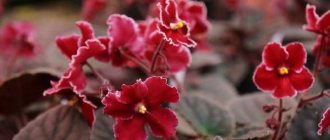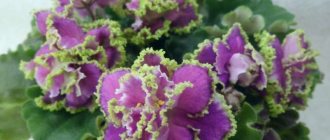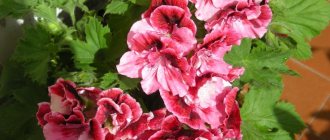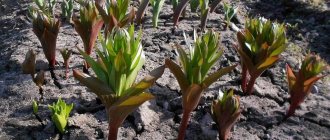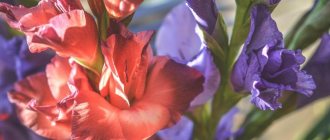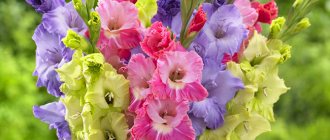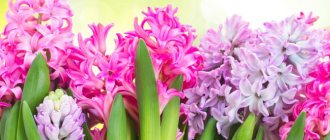Hazel grouse, or fritillaria (Fritillaria) is a herbaceous perennial plant that is a member of the lily family. This genus includes approximately 150 different species. In the wild, such plants can be found in the temperate zone of the Northern Hemisphere, in Western or Eastern Asia. The name of the fritillaria flower comes from the Latin word “fritillus”, which refers to a glass for throwing dice. The fact is that the fritillary flowers and this glass are very similar in shape. The name hazel grouse comes from the word “ryaboy”, which means “motley” in Russian.
Features of cultivation
Before planting hazel grouse, it is worth understanding the peculiarities of its cultivation.
Here are some basic tips from experienced flower lovers:
- These flowers should not be planted in beds. This is due to the fact that they begin to bloom from late April to late May. After flowering, there will be an empty space in the garden bed. Therefore, when planting, they should be mixed with other plants.
- After the plant stem dries, you need to dig up the bulb and then plant it again at the end of August. Otherwise, the flower will stop blooming and may rot. The bulb does not need to be dug up for baleen species, Caucasian and Chinese varieties.
What does a hazel grouse look like?
- There are species that reproduce by bulbs, but most reproduce by seeds. It is better to propagate by seeds, as this produces plants that are most adapted to the conditions of the middle zone.
- All flower varieties require well-drained soil. Also, hazel grouse does not tolerate stagnant moisture. It is best to plant bulbs in containers. These can be plastic containers or cups. They require drainage holes to be drilled and dug into the ground.
- Only hazel grouse bulbs are available for sale, seeds are not sold.
The most famous varieties of hazel grouse: imperial, chess.
Important! When propagated by seed, the plant will begin to bloom only after 3-5 years.
Flower names, distribution in nature
The Latin name of the genus Fritillaria (Fritillaria) translates as “glass” and indicates the shape of the flower, which actually resembles a bowl or vessel for wine. ,
In nature, hazel grouse grow throughout the temperate zone of both hemispheres, found in meadows and steppes, on rocky slopes of foothills and forest edges in Europe, Asia and North America.
The plant received its name not at all in honor of the famous bird, but because of the variegated color of the flowers, especially the checkerboard hazel grouse.
But the most important in the family is, of course, the imperial hazel grouse, which is popularly also called the Caesar’s crown, the tree of paradise and the tears of Mary.
Bulb selection
When to plant phlox in open ground in spring
Before you decide when to plant hazel grouse, you should choose the right bulb. Grouse bulbs are somewhat different from other bulbous plants.
When purchasing them, you should pay attention to the following:
- Size. The hazel grouse bulbs are large. A good specimen weighs five hundred grams. In some species, the weight reaches one kilogram.
- Dense composition. A healthy onion is hard to the touch. There should be no soft spots, rot or other damage.
- The bulb has a through hole. The dried stem located in the central part of the bulb does not need to be removed.
- Sprouted roots are acceptable on the bulb.
Checkered hazel grouse
Gardeners recommend purchasing bulbs right before planned planting. If they are purchased in the spring, then they need to be stored properly.
After the plant has flowered, the tubers are dug up. If the bulbs are large, digging must be done annually. After removing them, you need to save them until the next planting.
Store the plant bulbs in a dark place where the temperature does not exceed twenty degrees. If the temperature is too high, the planting material dries out and loses moisture, and this cannot be allowed. The best storage option is in boxes filled with sand.
What does a hazel grouse bulb look like?
Reproduction
To propagate the hazel grouse flower, gardeners most often use the vegetative method, that is, the natural division of the bulbs. True, the method is not the most productive, since fritillaria is not particularly prolific. For example, Imperial hazel grouse is capable of producing only two daughter bulbs per season. In addition, young planting material must be grown to standard sizes for several years.
This is interesting. It is because of such a long and difficult process that gardeners often resort to seed reproduction.
Breeding rules:
- Fruit capsules are collected not fully ripe to prevent cracking.
- Seeds are sown immediately after peeling in light, nutritious soil to a depth of 5 cm.
- At the same time, fertilize the flowers.
- The planting site is watered and covered with film.
The first shoots appear next spring. The seedlings are not dug up, but left in the ground to grow for 2–3 years.
The process of propagation by seeds is very long, but produces a lot of planting material.
There is another way of plant reproduction - artificial separation of scales. In this case, a healthy, large onion is broken into several parts, which are immediately planted in the school. By the end of August, the scales take root and go to winter. Buds on such plants appear in the third year.
Selecting and preparing a site for hazel grouse
When to replant primrose - in spring, summer or autumn
Before planting hazel grouse in the fall, you need to prepare the place. This is necessary for the flower to be healthy and develop properly.
The plants in question love a little shade, but they can also grow well in full sun. In this regard, a flowerbed can be chosen in an open area, especially since for the conditions of the middle zone such a place will be a priority. In the spring, the bulbs germinate faster and ripen by the winter. In southern areas, the bulb can be planted in partial shade.
The soil for hazel grouse should be loose and fertile. The plant bulb can be grown in the same place for more than five years.
How to prepare a place
The soil is prepared as follows:
- Sand is added to the soil, which will make it looser. For one sq. m. you need two buckets of sand.
- In addition, the soil is enriched with organic fertilizers. It is recommended to add humus, leaf soil, and compost.
If the bed is well prepared, then in the future you will not have to add additional organic or mineral fertilizer to the soil next to the plant.
Important! The most important thing is that in the place where the hazel grouse will grow, moisture and melt water should not stagnate.
Secrets of lush flowering of fritillaria
After winter sleep and the soil warming up to +12, fritillaria awakens and appears on the surface by the end of April. Loosen the soil around the flower, remove weeds, and apply phosphorus-potassium fertilizers.
During the period of active growth, the hazel grouse will reach half a meter in a couple of weeks; during this period, fertilizing in the form of compost should be applied. And when the plant produces its first flower stalk, apply root fertilizer in the form of ABA (all-purpose) granules for garden flowers.
During flowering, keep your fritillaria plantings moist and loosen the soil in a timely manner; this will saturate the plant with oxygen. Removing the seed box will increase the flowering period to 5 days. If you follow all the above measures, fritillaria will delight you not only with lush and large flowering, but also with unusually bright colors of flowers.
Landing dates
When to replant peonies in spring, summer and autumn
For beginning gardeners and gardeners, a problem arises when to plant hazel grouse, because the flowers begin to bloom in the spring. The answer to this question is that the bulbs need to be planted in early autumn.
When to land
The timing will vary for different areas, as the landing depends on the weather. The best option is early September, a month before the first frost occurs.
It takes three to four weeks for the onion to take root. If you delay planting a flower, it will not be able to adapt and will die in the winter.
For reference! There are late-flowering varieties that can be planted in the spring. But novice gardeners are better off choosing traditional varieties.
Fritillaria "Imperial"
Fritillaria “Imperial” has one of the largest inflorescences and buds. It was this variety that was the first to be called the “royal crown”. The inflorescences are collected in a tight, lush crown from bright orange to scarlet; above the inflorescences there is a kind of crown of leaves. An unpretentious variety, blooms from May to June. Reaches up to a meter in height. Will be a wonderful addition to any flower arrangement.
Direct landing
Planting of this plant for some species can be done in the spring, and for others in the autumn. Autumn planting is considered standard.
Planting hazel grouse in autumn: when and how to plant
The landing process looks like this step by step:
- Bulbs should be planted to a depth equal to three times their height. The largest bulbs are deepened to a distance of up to 20 cm, and small children - up to 10 cm.
- Sand drainage must be placed at the very bottom of the hole. Its layer must be at least 15 cm.
- The bulbs are planted directly. You can't lay it down at an angle. If there are roots, they need to be straightened.
- A distance of 25-30 cm must be maintained between the bulbs. This is due to the fact that hazel grouse are large plants and require more space for their development.
Before planting, you should ensure that moisture does not accumulate in the bed. If the occurrence of groundwater is too close, then the flowerbed is made high.
Spring planting
In spring, only those species that bloom late are planted. The landing process occurs in the following order:
- Preparing a hole for a flower. There should be no moisture in it. Sand can be used as drainage.
- The bulbs must be well dried.
- Very carefully place the bulbs in the hole sideways.
- Next they are sprinkled with sand.
For reference! It is worth undertaking spring planting only in cases where it is known for sure that the variety is late flowering.
Fritillaria “Persian” (black)
A representative of the Teresia group, “Persian” fritillary originates from Turkey and Iran. Blooms with large bells from dark burgundy, dark blue to
black flowers, with no less amazing bluish-green leaves. The buds are collected in a vertical cone. The height of the “Persian” fritillary reaches 90 cm in height. One peduncle can produce up to 25 buds.
Grouse - care after planting
The bulbs of this plant tolerate winter well. They are classified as frost-resistant. However, children and small onions require shelter. It must be carried out according to all the rules, especially if a winter with little snow is forecast.
The material used is spruce branches or straw. Do not use peat or humus. The mulch layer should be no less than 25 cm.
Covering the flower bed with plantings is done after the weather has settled and the temperature drops below 5 degrees. This will help prevent rodents from entering, as they love to make holes in the mulch layer.
How to care
When spring comes, the mulch is removed and the place where the bulbs were planted is cleared. This will allow the soil to warm up faster and the bulbs to begin to grow.
No special care is required for hazel grouse. It is important to follow the basic rules for all plants:
- The bulbs are moistened at least twice a month. Dry soil will be detrimental to hazel grouse;
- after the flower stops blooming (July), it is necessary to completely cut off the upper part of the plant;
- Fertilizers must be applied twice a season. Fertilizing is carried out during the flowering period. To do this, it is necessary to use complex fertilizer along with humus. The resulting composition is spread around the perimeter of the flowerbed and then watered with water.
Important! In cold weather, minerals (potassium, superphosphate) are added to fertilizers.
Fritillaria "Radde"
“Radde” is a beautiful variety of fritillaria, flowering lasts about three weeks, with large wide inflorescences of a delicate yellow-green color. Leaves are thin and long
rich green color. After flowering, "Radde" enters a dormant stage. "Radde" will respond with large and lush flowering and minimal care. The variety is used for landscaping and as an addition to flower arrangements.
Transplanting hazel grouse: when is the best time to do it?
Gardeners often wonder when to replant hazel grouse after flowering. It is possible to replant the plant only in one case, when the bulb is ready for it. Preparedness can be determined by the yellowing of the foliage, provided that the plant is healthy. Small bulbs need to be planted quickly because they can lose a lot of moisture.
You should not replant hazel grouse when the soil is too wet. This can lead to rotting of the root system.
How to replant
When replanting, you need to be very careful with the roots of the plant, as they are very easy to damage.
The hazel grouse is a unique plant: it is not only very beautiful, but also useful. The flower is able to repel insects and rodents. Growing it and caring for it will not be difficult. The main thing is to follow the basic rules of planting and care: planting dates, storage of planting material, soil preparation and fertilizing, correct arrangement of tubers, preparatory procedures for winter. By following these rules, you can grow flowers that will delight you with their appearance.
Botanical portrait
Hazel grouse is a perennial plant with round, slightly flattened bulbs consisting of 2-4 fleshy fused scales.
Young bulbs that have not yet bloomed, or, as they are also called, juvenile bulbs, are slightly elongated in length.
The leaves of the hazel grouse are narrow, lanceolate, arranged alternately or in whorls on the shoot. The height of the pagons in different species ranges from 10 cm to 1 m.
The flowers are drooping, solitary or grouped in umbellate or racemose inflorescences of 3-7.
The corollas are goblet- or bell-shaped and colored yellow, orange, terracotta red, cherry brown, dark purple, almost black, and in some species with a checkerboard or speckled pattern. They bloom in April-May.
Like most ephemeroids, they grow no longer than June, then the above-ground part turns yellow and dies, and a dormant period begins for the bulbs.
When the roots at the bottom of the bulb die, it’s time to dig them up. By this time, light brown winged seeds in hexagonal boxes also ripen.
Difficulties in growing
In addition to too wet soil, other factors can disrupt the flowering process and lead to the death of hazel grouse. For example, drafts or north wind. It is worth taking care in advance to choose an area where there will be a windless atmosphere (for example, behind the wall of a building or gazebo, near dense bushes).
Another reason for the lack of flowering in Russian hazel grouse is that the bulb size is too small. The roots must be firmly established in the soil and the plant must gain strength. This may take 1-2 years after planting.
This is what the boxes with fritillaria seeds look like


